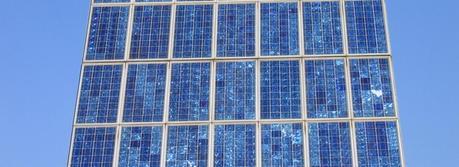
New Electrolyte Component Makes Dye-Sensitized Solar Cells More Efficient
A dye-sensitized solar cell is simple to make using conventional roll-printing techniques, is semi-flexible and semi-transparent which offers a variety of uses not applicable to glass-based systems, and most of the materials used are low-cost. However its conversion efficiency is less than the best thin-film cells. Scientists at the Uppsala University now propose a new electrolyte component—cobalt complexes—to make dye-sensitized solar cells more efficient.
The world’s energy needs are growing constantly, all while more and more environmental issues are observed as a consequence of increasing carbon dioxide emissions. This increases pressure to use renewable energy sources, such as solar energy, but the production of solar cells is still too costly to compete with available energy sources.
In her thesis, Sandra Feldt has researched dye-sensitized solar cells. These can be made from cheap, environmentally friendly materials and have a great potential for reducing the price of solar cells compared to available solar cell technologies on the market. The solar cells can be made in different colors or transparent, which makes them interesting for many different applications such as integration in buildings.
Dye-sensitized solar cells convert sunlight into electric energy through a dye adsorbed to a titanium oxide semiconductor. The system can be likened to photosynthesis where chlorophyll in green leaves absorbs sunlight for converting water and carbon dioxide into oxygen and carbohydrates. And similarly to a battery, a solar cell has an electrolyte between the positive and negative poles which transports charges.
The thesis studies a new component in the electrolyte, cobalt complexes.
“We showed for the first time that a a higher voltage and efficiency could be achieved by using cobalt complexes in combination with organic dyes in the dye-sensitised solar cell”, says Sandra Feldt.
This new electrolyte component helps achieve a record-level efficiency of 12.3 per cent. The research group’s discovery has affected research on dye-sensitised solar cells across the world.
You can read more about the thesis and download it here.
By Linda Koffmar
Feldt, S., Cappel, U., Johansson, E., Boschloo, G., & Hagfeldt, A. (2010). Characterization of Surface Passivation by Poly(methylsiloxane) for Dye-Sensitized Solar Cells Employing the Ferrocene Redox Couple The Journal of Physical Chemistry C, 114 (23), 10551-10558 DOI: 10.1021/jp100957p
